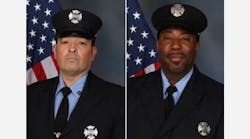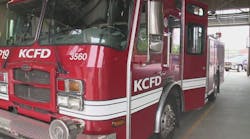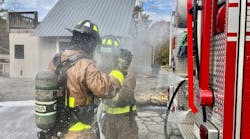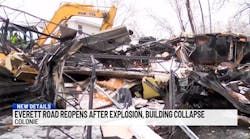The healing hurts. It burns. It aches.
``At the end of the day you can make a fist and you can move your elbow and you feel great,'' said Harrington. ``Then you wake up and you're stiff again. That process goes daily for four, six, eight months.''
That's what's ahead for many people whose lives were changed when fire raced through The Station nightclub in February. It's what Harrington calls the ``second phase of recovery.''
``There's an acute phase of burn care and then there's going to be this longer phase which is sometimes, for them, more personally taxing,'' said Harrington, a trauma surgeon at Rhode Island Hospital.
The hospital treated 43 survivors of the West Warwick fire. They had burns covering between 3 percent to 45 percent of their bodies. Twenty-nine of those patients required skin grafts, when doctors cut away leathery, burned skin and replace it with healthy skin, usually shaved from another part of the body.
Surgeons performed 41 skin-graft operations in the first seven weeks after the fire. That's more than they typically do in a year.
Today, all patients have been released from the hospital, and doctors and nurses have gone from saving lives to helping rebuild them.
``They all want to come back to their normal life but it doesn't happen overnight,'' said Harrington. ``One of my patients has only one question: 'Can I fine tune my Harley?' Everyone gives you a different perspective and everyone has a different set of challenges.''
For 28-year-old Kerrie Rock, the challenge isn't limited to regaining mobility in her hands and learning to walk again.
``Her son can't hug her. That's the most painful thing. She would gladly give up everything else for the many hugs she can't receive right now,'' said Janice Rock, Kerrie's mother.
Rock, of West Warwick, was discharged from the hospital in April. She underwent two skin-graft operations to heal her upper back, forearms and hands. Three times a week, she is visited by occupational and physical therapists, and a nurse comes to her house daily to change the dressings on her burns.
``I don't expect she'll be able to return to work for at least eight or nine months,'' Janice Rock said.
One hundred people died as a result of the fire, which was sparked by a band's pyrotechnics.
In the week after the blaze, two operating rooms were devoted to burn surgeries each day. Multiple surgeries were done daily and the pace eventually slowed to about three or four skin-graft operations a week.
In burn surgeries, patients need to be repositioned often. That makes the procedure tough _ each time a patient is turned, all the sterile drapes must be changed and the operating-room staff has to change gowns and gloves.
The operating room must also be heated to 85 degrees because burn patients lose body heat quickly. ``You'd sweat during the surgeries. I'd drink a lot of those little bottles of water every time I left a room,'' said Harrington, who dropped 10 pounds in seven weeks under those conditions.
Dr. Eric Halvorson, the chief trauma resident, said some of the more badly burned patients may undergo additional surgeries in months and years to come to reduce scarring.
While Rhode Island Hospital regularly treats patients injured in house and automobile fires, it does not have a dedicated burn unit, and most of the staff hadn't seen anything like the burns on victims from The Station fire.
Hospital officials credit their terrorism preparedness plan for their quick response to the onslaught of severely burned patients.
They also credit Harrington, and chief of surgery Dr. William Cioffi.
Almost a decade ago, while working at the Army's Burn Center in San Antonio, Texas, the two doctors responded to a military plane crash that killed 23 people and left 60 others with severe burns.
``I've been in this situation before and it happened to be with Bill Cioffi,'' Harrington said.
Cioffi was well rehearsed with triage and knew what to expect.
``When you think about it, how do you know how many bottles of burn cream you need?'' said Harrington. Doctors say they went through hundreds of moisturizing creams and lotions, and administered innumerable vials of morphine.
Because of the nightclub disaster, the hospital is applying for burn center verification, a designation the American Burn Association gives to hospitals meeting certain criteria, such as having a burn specialist on duty and holding workshops on burn treatment.
These days, the hospital's intensive care unit is decidedly upbeat. Nurses, tightlipped in the days following The Station disaster, now speak enthusiastically about their patients' recovery and pose for pictures with families.
``I had him the first night,'' trauma nurse Michelle Davis said before the last nightclub fire patient was released from Rhode Island Hospital. ``It's amazing, how bad he was then, and how good he is now.''
___
On the Net:





